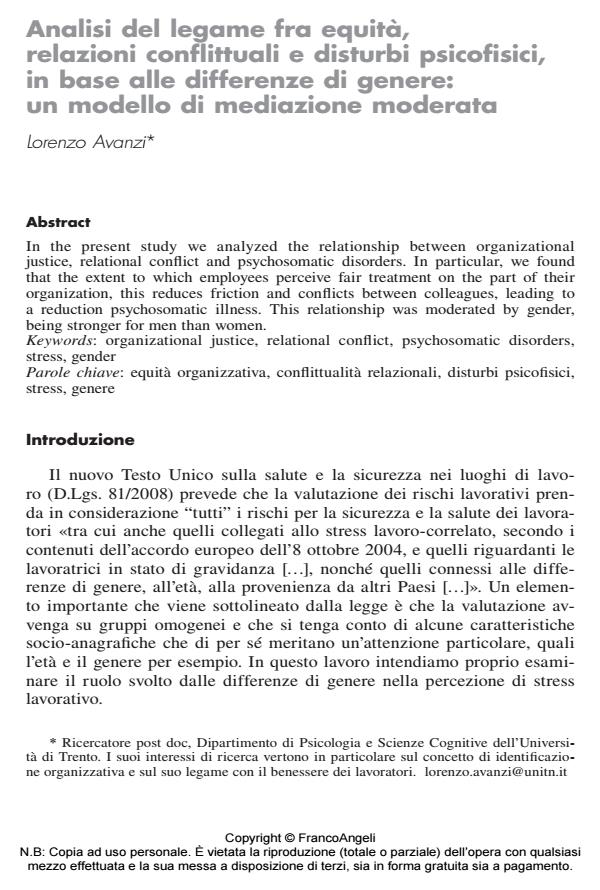Analisi del legame fra equità, relazioni conflittuali e disturbi psicofisici, in base alle differenze di genere: un modello di mediazione moderata
Titolo Rivista SICUREZZA E SCIENZE SOCIALI
Autori/Curatori Lorenzo Avanzi
Anno di pubblicazione 2015 Fascicolo 2015/1
Lingua Italiano Numero pagine 12 P. 149-160 Dimensione file 113 KB
DOI 10.3280/SISS2015-001012
Il DOI è il codice a barre della proprietà intellettuale: per saperne di più
clicca qui
Qui sotto puoi vedere in anteprima la prima pagina di questo articolo.
Se questo articolo ti interessa, lo puoi acquistare (e scaricare in formato pdf) seguendo le facili indicazioni per acquistare il download credit. Acquista Download Credits per scaricare questo Articolo in formato PDF

FrancoAngeli è membro della Publishers International Linking Association, Inc (PILA)associazione indipendente e non profit per facilitare (attraverso i servizi tecnologici implementati da CrossRef.org) l’accesso degli studiosi ai contenuti digitali nelle pubblicazioni professionali e scientifiche
In the present study we analyzed the relationship between organizational justice, relational conflict and psychosomatic disorders. In particular, we found that the extent to which employees perceive fair treatment on the part of their organization, this reduces friction and conflicts between colleagues, leading to a reduction psychosomatic illness. This relationship was moderated by gender, being stronger for men than women.
Parole chiave:Equità organizzativa, conflittualità relazionali, disturbi psicofisici, stress, genere
Lorenzo Avanzi, Analisi del legame fra equità, relazioni conflittuali e disturbi psicofisici, in base alle differenze di genere: un modello di mediazione moderata in "SICUREZZA E SCIENZE SOCIALI" 1/2015, pp 149-160, DOI: 10.3280/SISS2015-001012